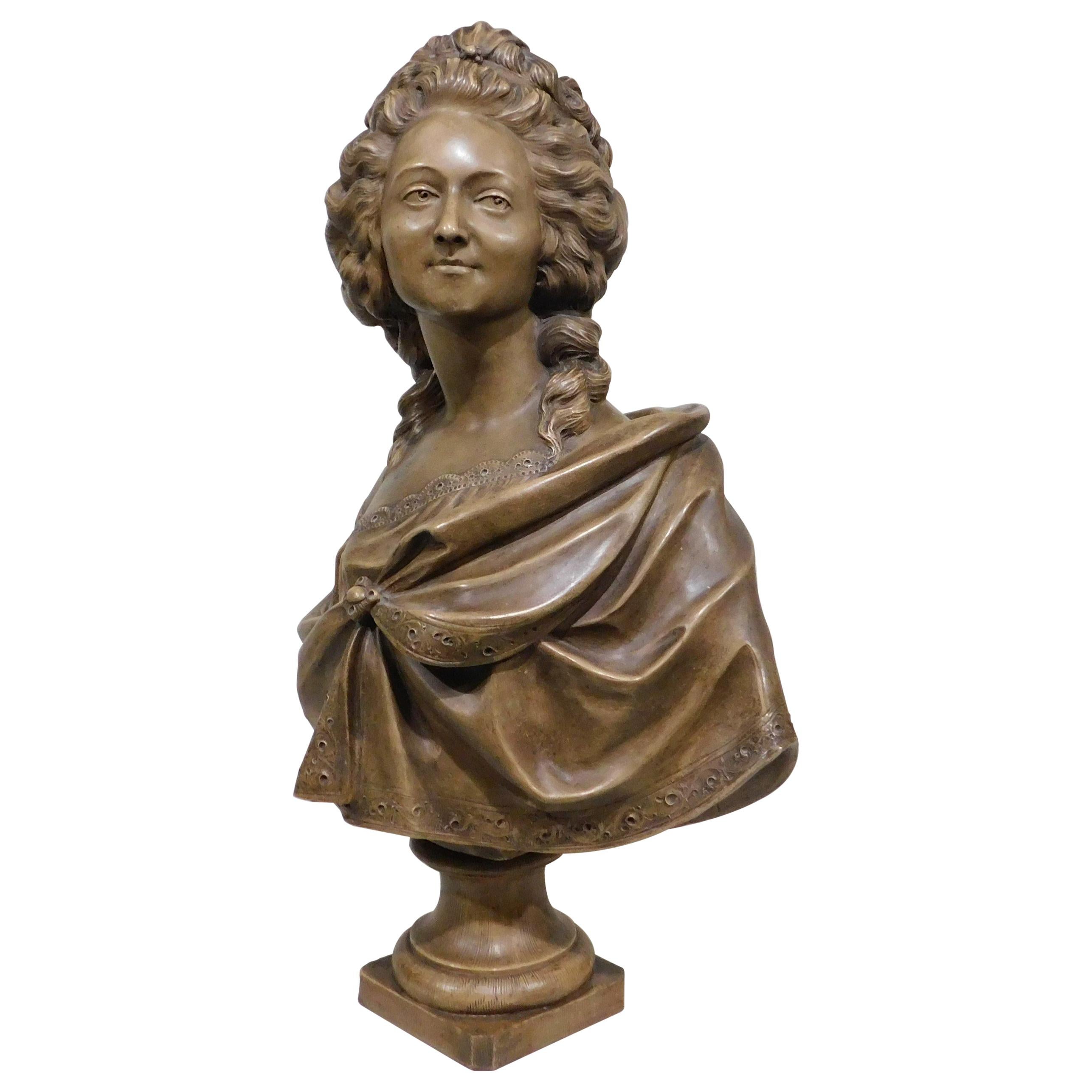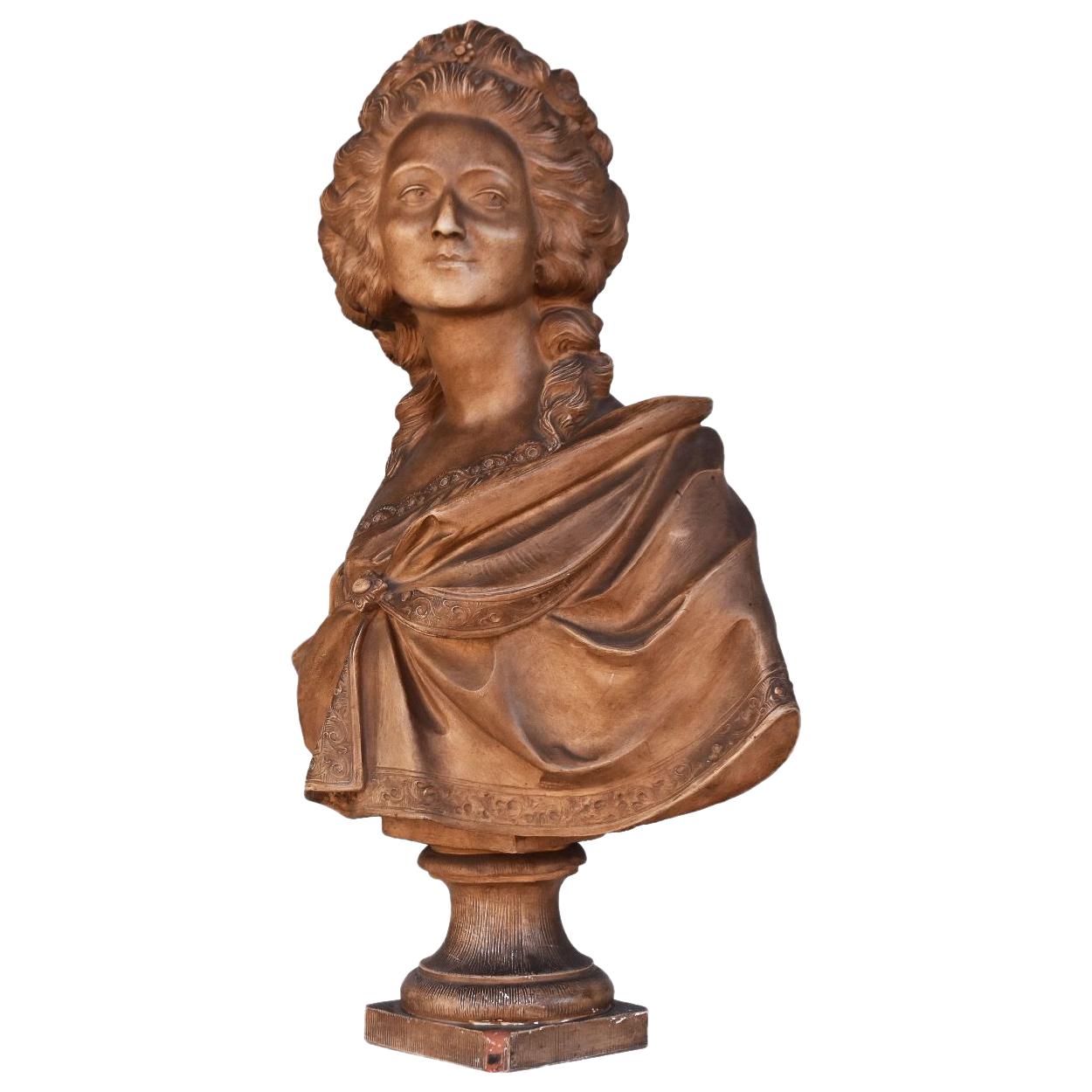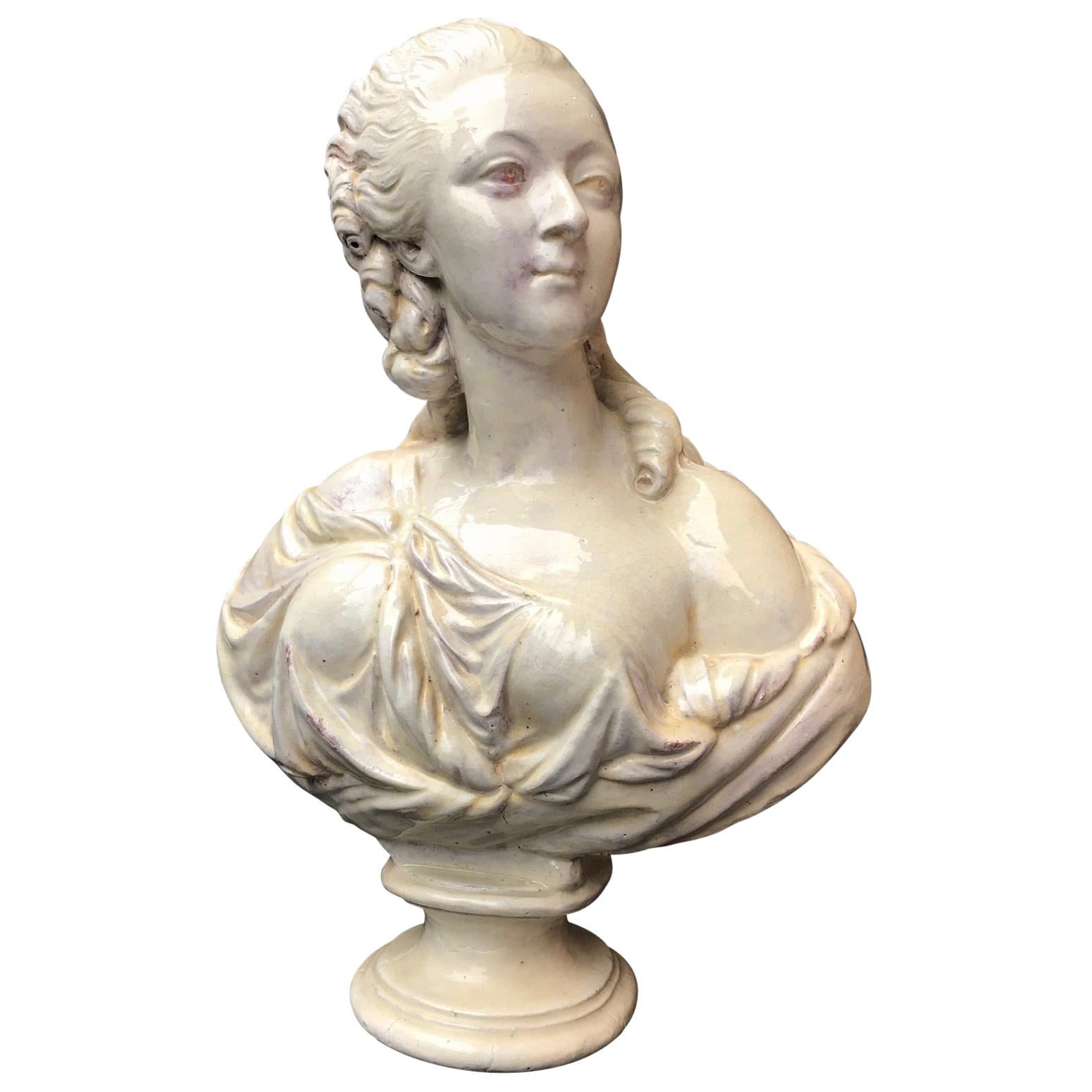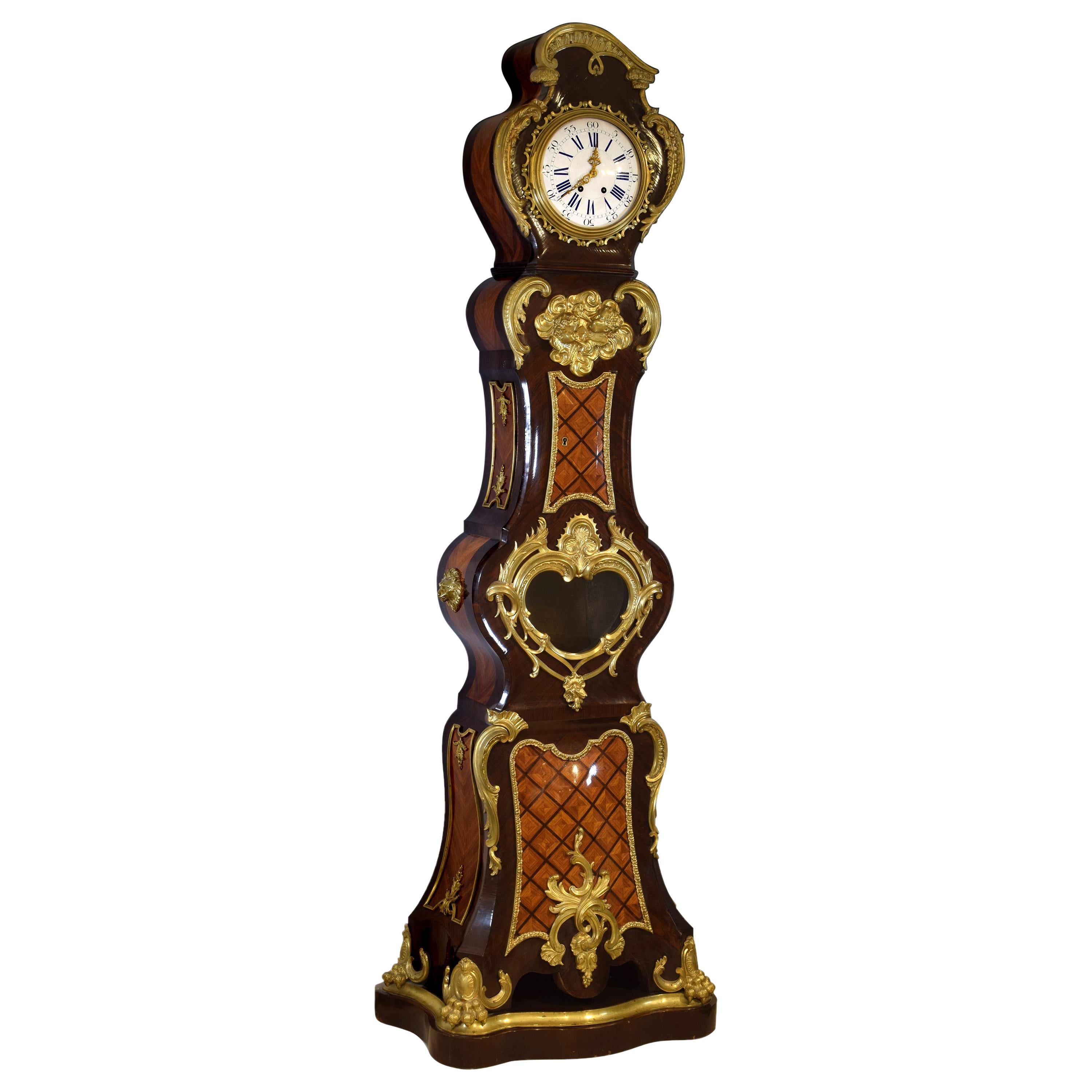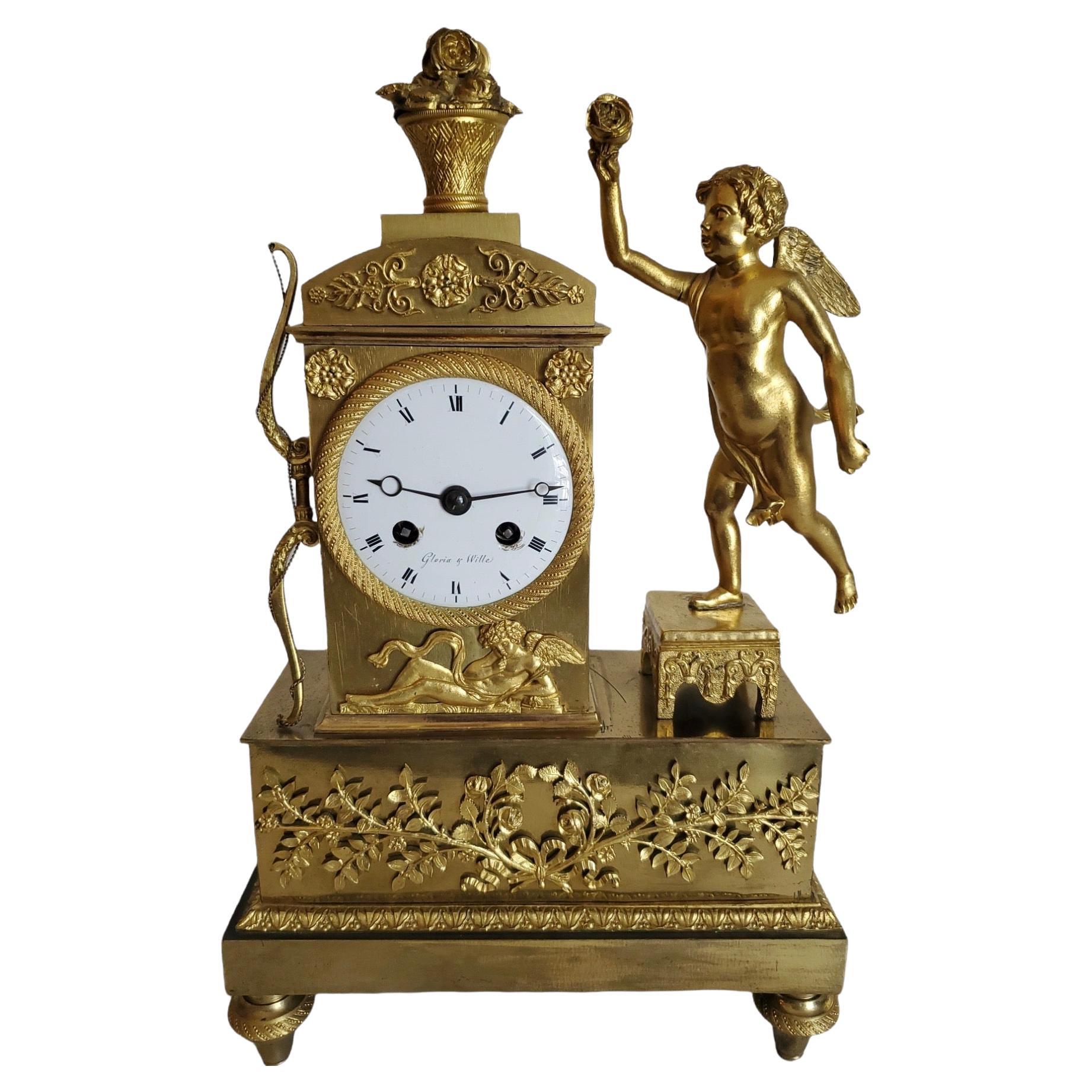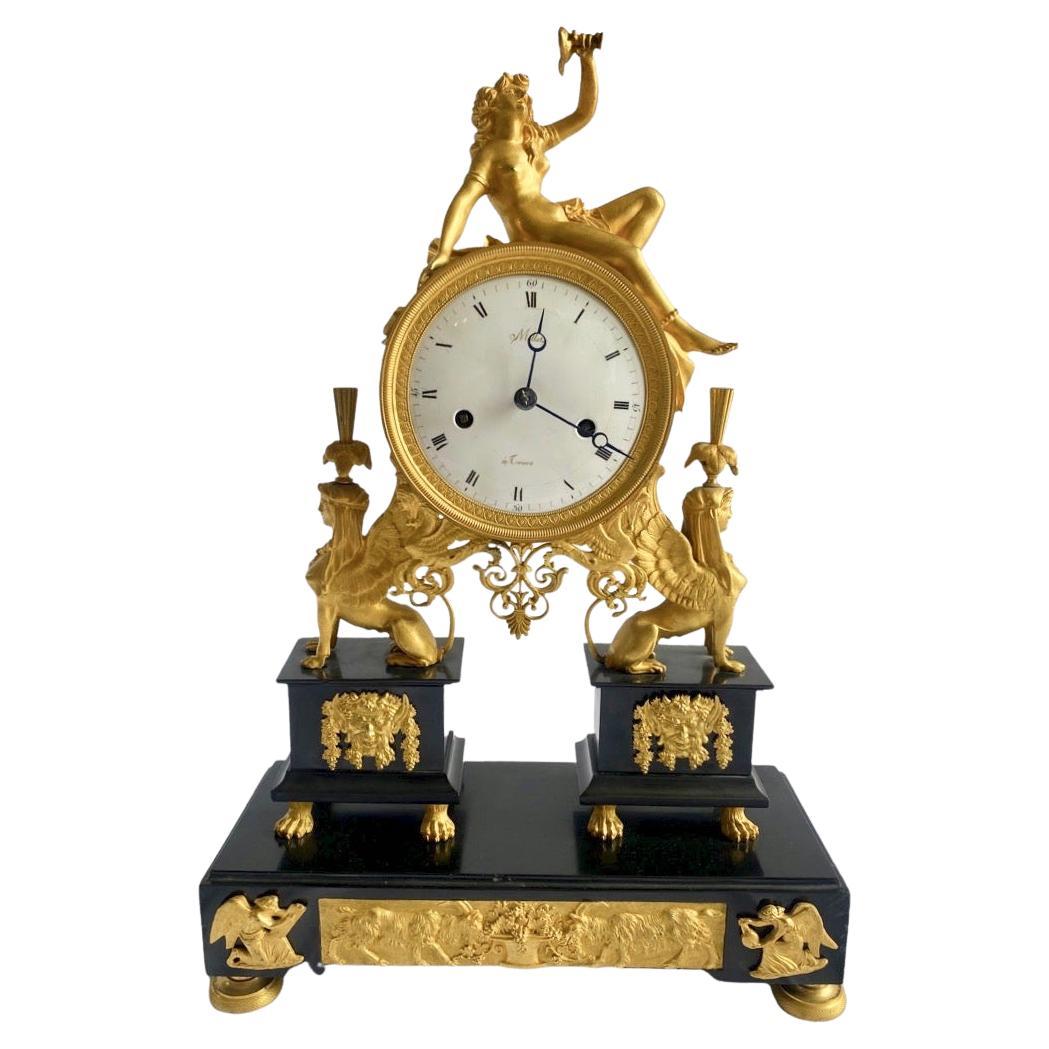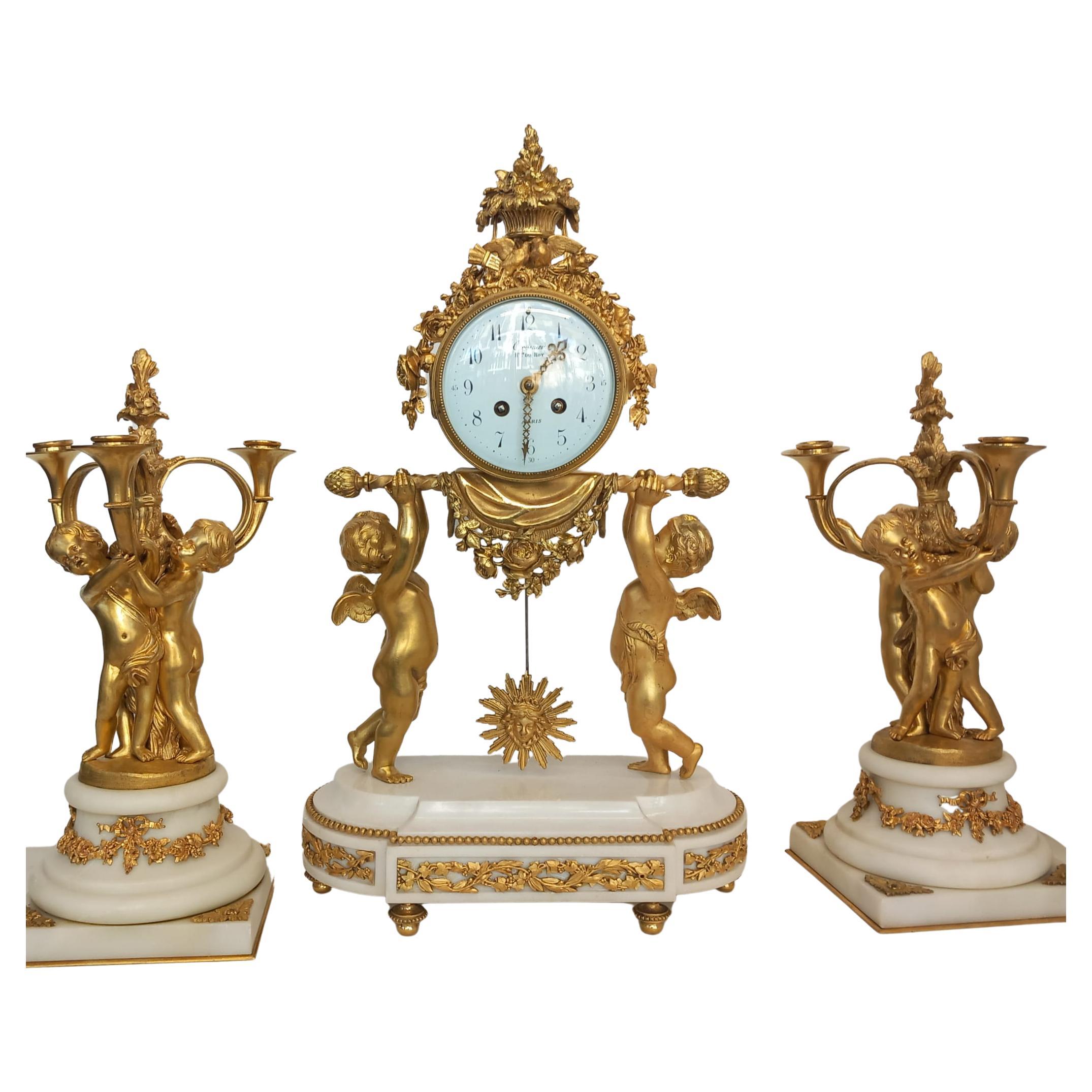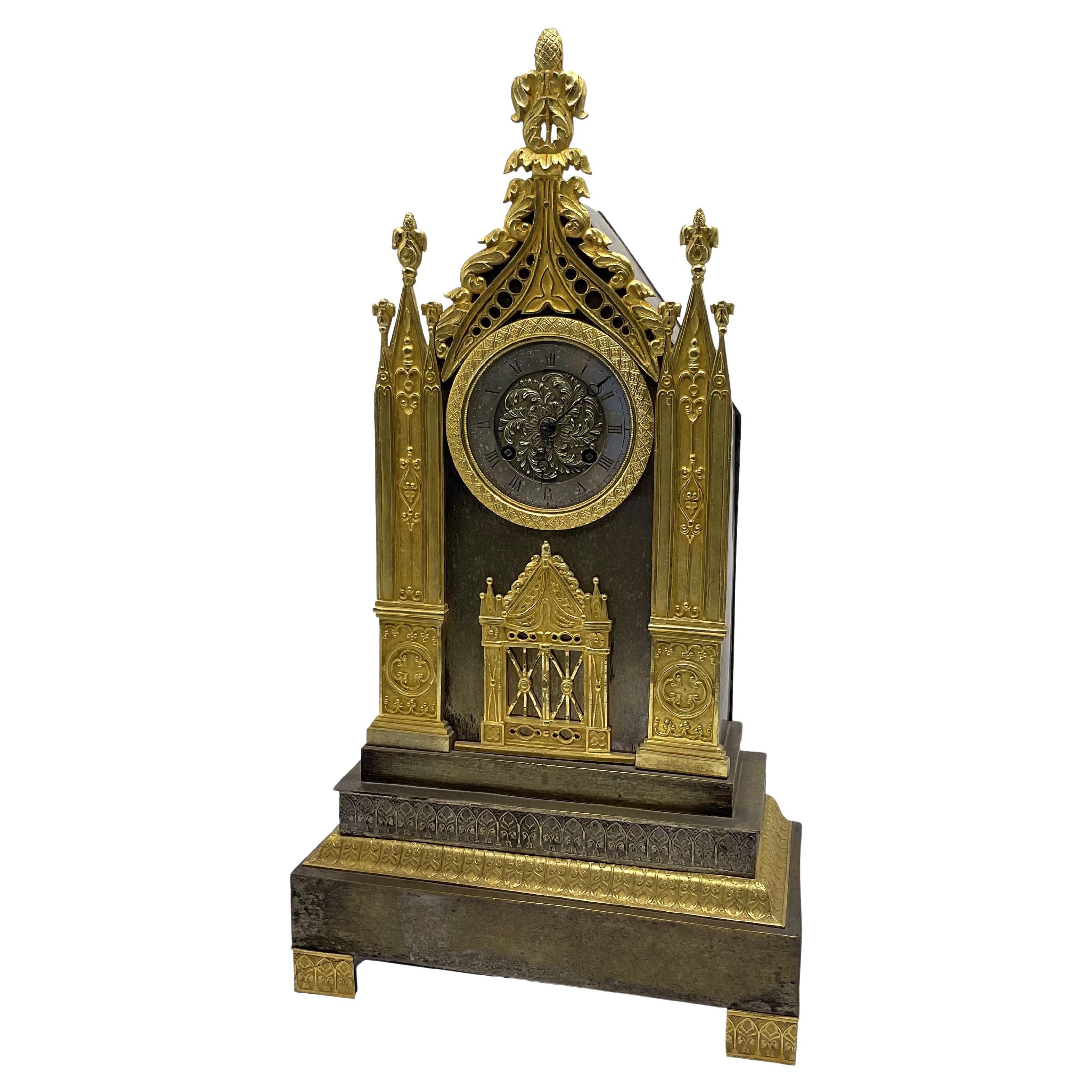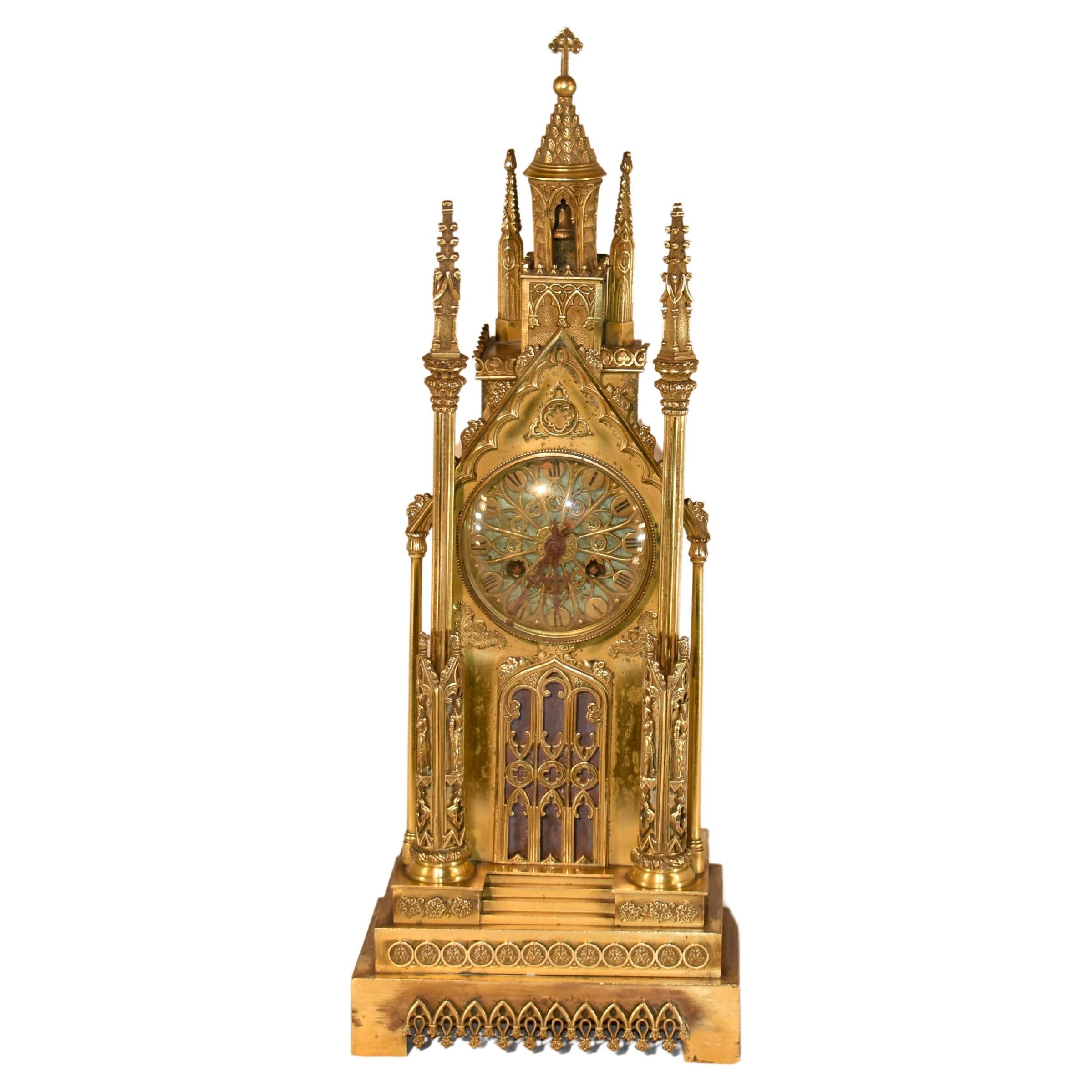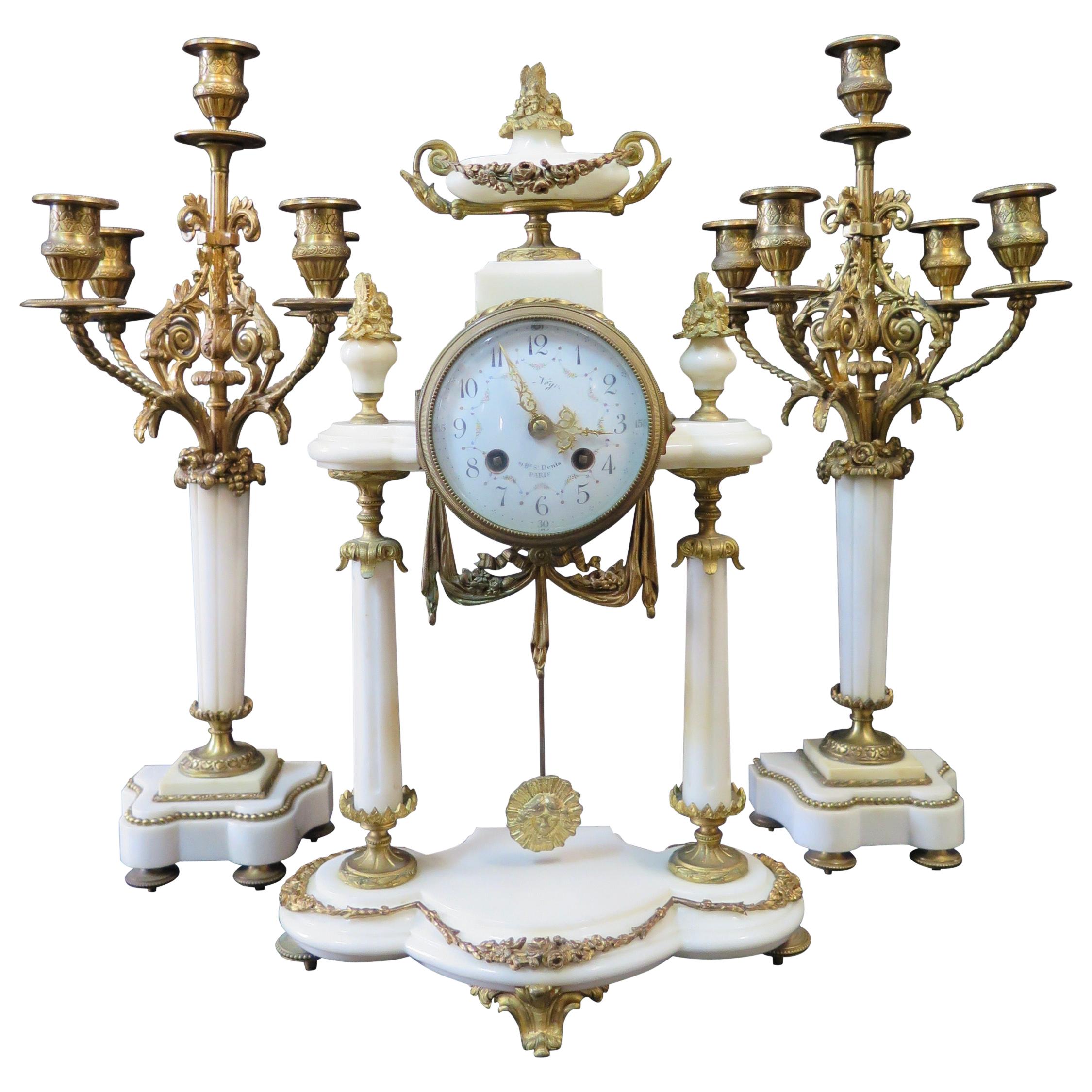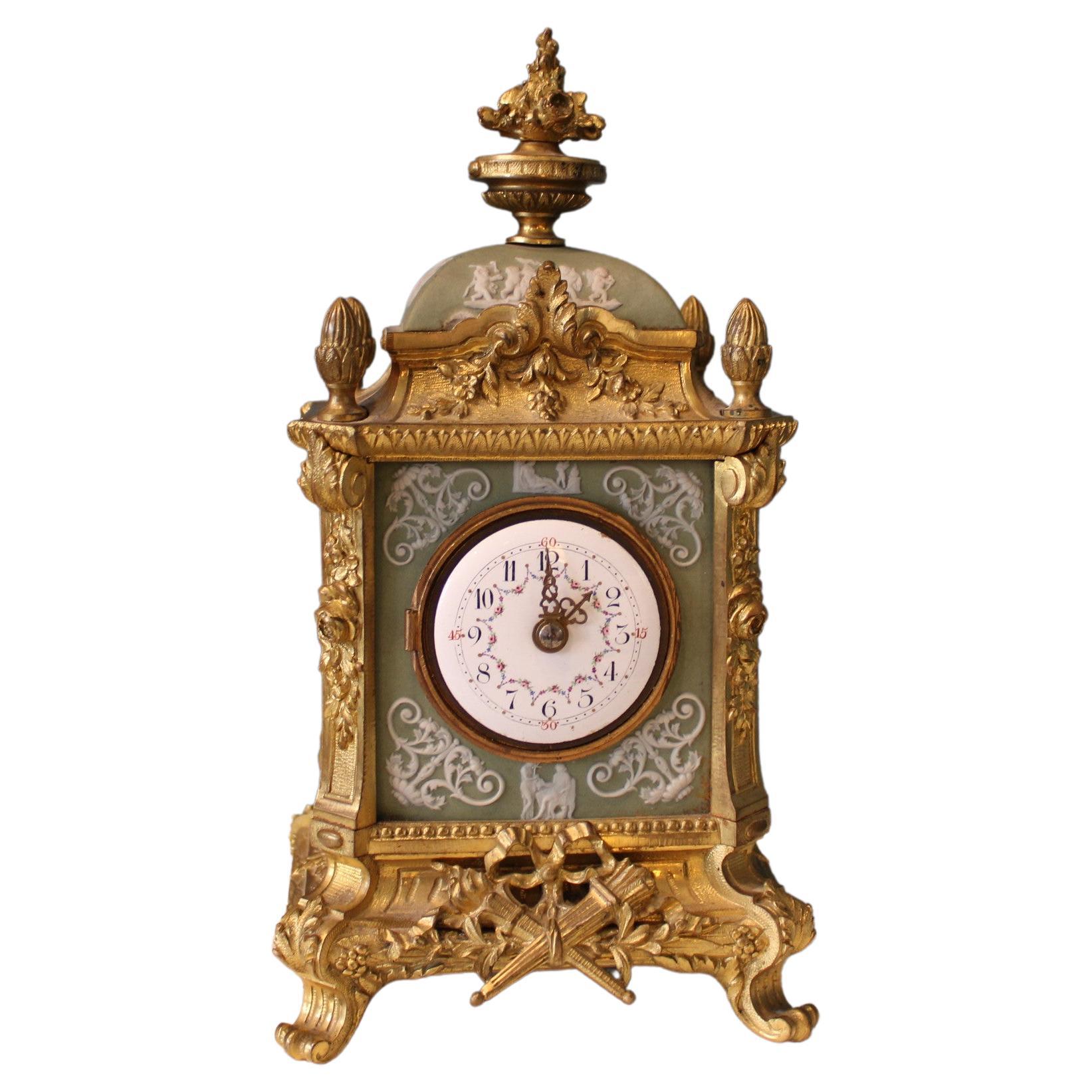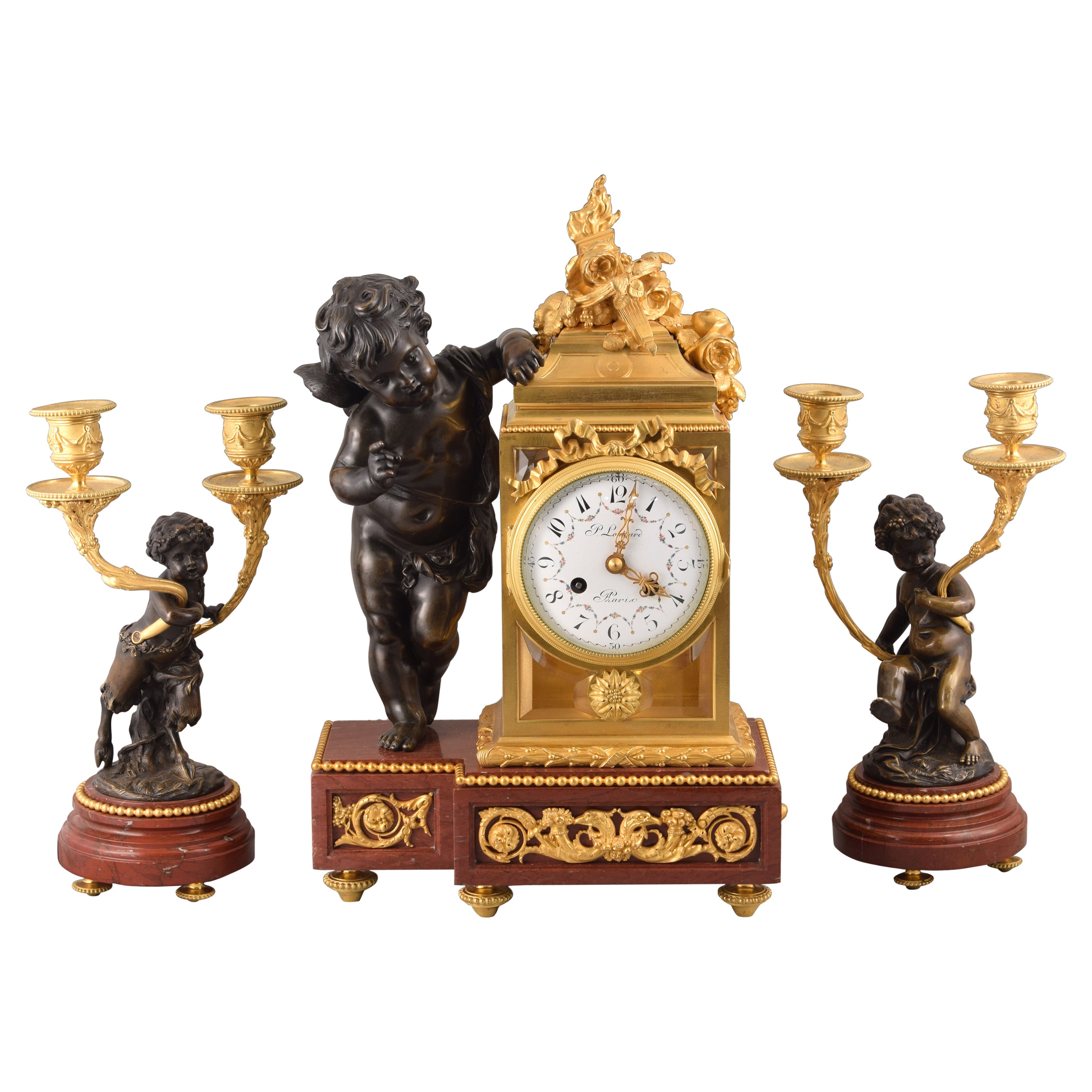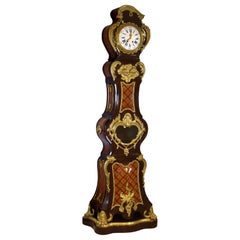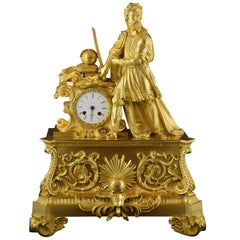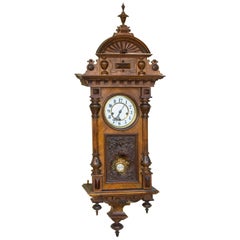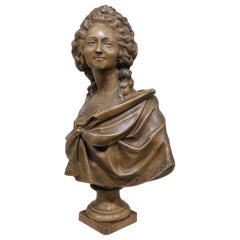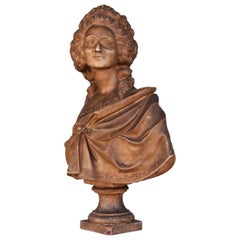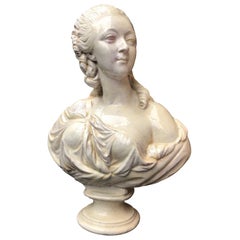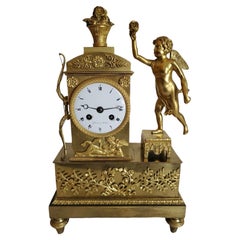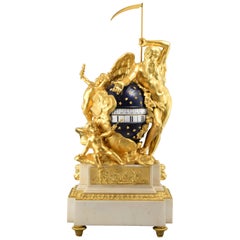
Cadran Tournant Clock, after Augustin Pajou, France, 19th Century
View Similar Items
Want more images or videos?
Request additional images or videos from the seller
1 of 20
Cadran Tournant Clock, after Augustin Pajou, France, 19th Century
About the Item
- Similar to:Augustin Pajou (Sculptor)
- Dimensions:Height: 27.56 in (70 cm)Width: 13 in (33 cm)Depth: 10.24 in (26 cm)
- Style:Neoclassical (Of the Period)
- Materials and Techniques:
- Place of Origin:
- Period:
- Date of Manufacture:19th century
- Condition:Wear consistent with age and use. Minor losses. Minor fading.
- Seller Location:Madrid, ES
- Reference Number:Seller: ZF04201stDibs: LU2951314481532
About the Seller
4.9
Vetted Professional Seller
Every seller passes strict standards for authenticity and reliability
Established in 1985
1stDibs seller since 2017
333 sales on 1stDibs
Typical response time: 8 hours
Authenticity Guarantee
In the unlikely event there’s an issue with an item’s authenticity, contact us within 1 year for a full refund. DetailsMoney-Back Guarantee
If your item is not as described, is damaged in transit, or does not arrive, contact us within 7 days for a full refund. Details24-Hour Cancellation
You have a 24-hour grace period in which to reconsider your purchase, with no questions asked.Vetted Professional Sellers
Our world-class sellers must adhere to strict standards for service and quality, maintaining the integrity of our listings.Price-Match Guarantee
If you find that a seller listed the same item for a lower price elsewhere, we’ll match it.Trusted Global Delivery
Our best-in-class carrier network provides specialized shipping options worldwide, including custom delivery.More From This Seller
View AllClock, France, 19th C., after Charles Cressent 'France, 1685-1768'
By Charles Cressent
Located in Madrid, ES
Clock. Palo santo, rosewood, golden bronze. France, 19th century, modeled after Charles Cressent (France, 1685-1768).
Wooden box grandfather clock in which palo santo, rosewood an...
Category
Antique 19th Century French Neoclassical Grandfather Clocks and Longcase...
Materials
Bronze, Other
Clock Set, Bronze, Rouge Griotte, Etc, France, 19th C. After Clodion
Located in Madrid, ES
Clock garnish and two candlesticks. Bronze, rouge griotte marble. France, 19th century, following Clodion's models.
Set or garnish consisting of a table clock and two candlesticks ...
Category
Antique 19th Century French Neoclassical Table Clocks and Desk Clocks
Materials
Griotte Marble, Bronze, Other
Table Clock, Ormolu, 19th Century
Located in Madrid, ES
Table clock made of gilded bronze with a powerful base, enhanced with legs decorated with vegetal and architectural motifs of classicist inspiration and a series of details on the fr...
Category
Antique 19th Century European Neoclassical Mantel Clocks
Materials
Bronze
Henry II Style Pendulum Clock, 19th Century
Located in Madrid, ES
The style Henry II ("Henri II") was the name given to an artistic style emerged in France in the 19th century and was inspired by the Renaissance of this country making a series of f...
Category
Antique 19th Century French Neoclassical Wall Clocks
Materials
Wood
Garniture, clock and candelabra. Bronze, porcelain. France, 19th century.
Located in Madrid, ES
Garnish with clock and candelabra in porcelain and gilt bronze. France, 19th century.
Mechanism in perfect working order.
Fireplace garnish composed of a clock and two five-light candelabras, all three pieces made by combining gilt bronze, with relief elements and round bulges and cold-chiseled details, and porcelain decorated with low-temperature enamels, including gold enamel. The porcelain pieces follow models from the Sèvres National Manufacture of the 18th century, with large pictorial cartouches on a cobalt blue background adorned with golden plant motifs. The set follows a historicist design that combines baroque and neoclassical elements with enamelled scenes of Rococo inspiration, representing landscapes and scenes with mythological themes alluding to the arts and the goddess Venus. The clockwork is stamped “Chles. MT”, with serial number 17420. The main glazed porcelain plates are signed DP Boncher. The clock follows an architectural structure, with an oval base with a prominent front in plan, raised on four molded feet in the shape of a top, on which a large ornamental vase is placed. This plinth has a distinct pinto and, above it, a main body as a façade, with a circular pediment that houses the clock face. This includes black enamelled Roman numerals on white medallions with a gold border, arranged around the central representation of a putti reclining among clouds, holding a floral garland and accompanied by musical instruments. Among the medallions that house the numbers, a small jeweled decoration that evokes pearls and embedded rubies, which is echoed in the secondary areas of the body of the piece and also the vase, always combined with delicate golden filigrees.
On both sides of the sphere are two female portraits of ladies from the 18th century, in oval frames. Below, a classically inspired scene with a muse holding musical instruments, probably Euterpe or Erató, accompanied by a putti reading a sheet of music. On the sides of the clock body, two large curved rectangular plates house highly pictorial enameled landscapes, worked with the same miniaturist precision as the rest of the enameled cartouches. These are landscapes of romantic heritage, again inspired by the 18th century, with ideal settings for a twilight atmosphere, featuring classical ruins. The vase that tops the body of the clock has a hemispherical tank, shoulders ending in an edge, an openwork truncated conical neck, which opens smoothly towards the shoulders, and a domed lid, also openwork. The handles are figurative, in bronze, with two female sisters crowned with flowers, of clear Greco-Latin inspiration, worked in a round shape. In the tank, the vase houses two enameled porcelain cartouches, the front one with two putti and a dove - a symbolic allusion to Venus - and the back one with musical instruments. The design of the clock is completed by two thick bronze S-shaped plant braces, under the vase, and counter moldings and plant motifs cast in relief and cold chiseled, combining matte and polished finishes. The candelabras follow a similar design, with large vases of neoclassical design on pedestals, in this case cylindrical, raised on four low feet of turned design. The bases house porcelain cartouches with scenes of putti related to the arts; In one of them we see two putti practicing painting, and in the other two others in a scene related to classical lyric poetry, with one putto writing while the other, holding a lyre, raises a laurel wreath above his head. The cartouches that occupy the front of the candelabra vases...
Category
Antique 19th Century French Neoclassical Revival Mantel Clocks
Materials
Metal, Bronze, Other
Carriage clock with case. 19th century
Located in Madrid, ES
Travel clock with case. Metal, glass, leather, etc. XIX century.
Case with lid at the top and front with a transparent glass sheet, upholstered on the inside, containing a travel cl...
Category
Antique 19th Century European Neoclassical Revival Carriage Clocks and T...
Materials
Metal, Other
You May Also Like
After Augustin Pajou, French, Large Terracotta Bust
By Augustin Pajou
Located in Hamilton, Ontario
Large 19th century terracotta ceramic figurative sculpture, beautifully hand crafted after French neoclassical sculptor Augistin Pajou. Possible to be Marie Antoinette born Maria Ant...
Category
Antique Late 19th Century French Neoclassical Figurative Sculptures
Materials
Terracotta
19th Century Terracota Bust by Augustin Pajou
By Augustin Pajou
Located in Marseille, FR
19th century terracota bust by Pajou. Signature on the back. Probably Madame du Barry but may be Marie Antoinette.
Category
Antique Late 19th Century French Busts
19th Century Glazed Terracotta Bust of Countess du Barry after Augustin Pajou
By Augustin Pajou
Located in Vero Beach, FL
This large bust, depicting the Countess du Barry, was made after the 18th century original by Augustin Pajou. It is in the Louvre collection. He was ...
Category
Antique 19th Century French Rococo Busts
Materials
Terracotta
19th Century French Bronze Empire Clock
Located in Los Angeles, CA
19th Century French dore bronze empire clock. With original key.
Category
Antique 19th Century French Neoclassical Table Clocks and Desk Clocks
Materials
Bronze
19th Century French Empire Clock
Located in Los Angeles, CA
19th Century finely chased and cast dore bronze mantle clock. Porcelain dial in excellent condition. Signed "Millet." Original pendulum. Don't have original key, but can have one made.
Category
Antique 19th Century French Empire Mantel Clocks
Materials
Marble, Bronze
A French 19th Century Clock Garniture
Located in London, GB
A French 19th Century gilt bronze clock garniture. The clock has two cherubs, holding the clock, on a white marble and Ormolu mounted ba...
Category
Antique Mid-19th Century French Napoleon III Table Clocks and Desk Clocks
Materials
Marble, Bronze, Ormolu
$10,560 / set
